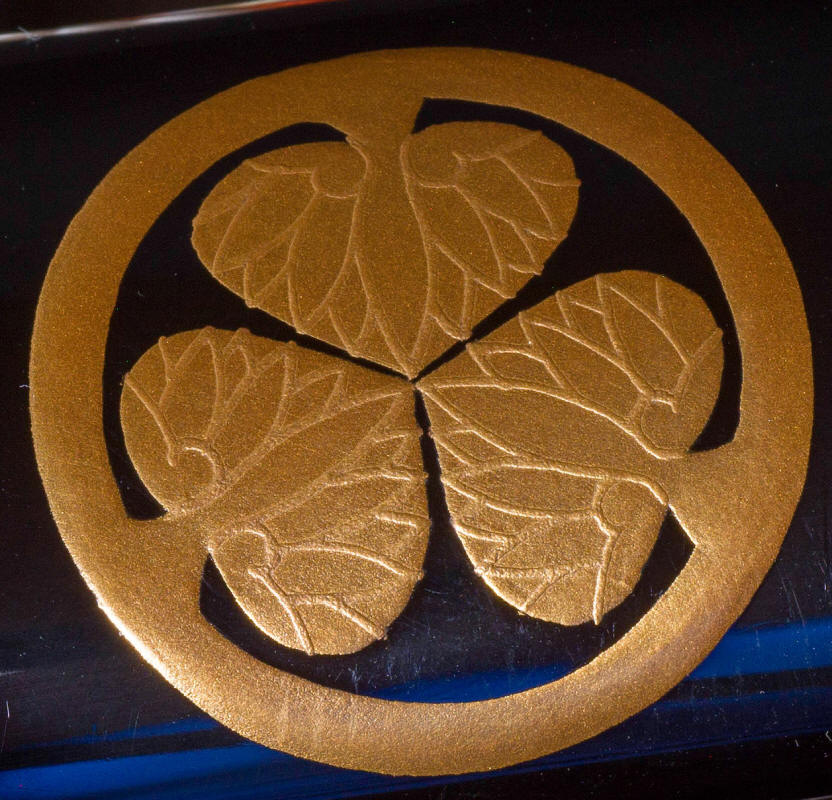
Hosho or Yoshimitsu Tanto & Aiguchi Koshirae
KK0519
SOLD
A mumei tanto with competing attributions to Sue Hosho and Yamato Yoshimitsu Hawatare: 8 sun 7 bu (26.363 cm or 10.38"). Motohaba: 3.126 cm. Kasane: 8.49 mm. Hirazukure, iroi mune. A bright hosho suguba, ko nie, sunagashi mixed in. The jigane is tightly packed masame with fine jinie and long kinsuji forming along the masa. The boshi is maru, with an insignificant kaeri. NBTHK Koshu Tokubetsu Kicho and Tokubetsu Hozon to Sue Hosho. NTHK/NPO certificate to Yamato Yoshimitsu, around Kemmu (1334-1336).
Formal aiguchi koshirae with horn fuchi-kashira, unusually large Goto solid gold menuki of roster and hen, an earlier Goto kozuka shakudo with very fine nanako with roster, chick, and adolescent in solid gold. As per Robert Haynes, 'Likely early main line Goto. The menuki might be main line as well, but later'. The storage scabbard is finished in high quality, thick black lacquer. A pegged kiri wood box with hakogaki to Hosho. There is also a lacquer storage box with Tokugawa, Kiri, and Kiku mon.
Tanto came into widespread use after the two attempted Mogul invasions in the latter part of the thirteenth century. Many highly skilled smiths turned their attention to tanto production, not only in Soshu, as seen iin the well known examples, but other provinces as well. Hosho Tanto tended to have a slender sugata, and wide kasane. Because of the consistency of workmanship throughout the generations, it is difficult to make precise attributions of mumei pieces .
Kunimitsu, working around Koan jidai (1278-1288) is credited with the founding of the Hosho school. There are thoughts that Sadamitsu founded the school, but since there are no extant works, it has defaulted to Kunimitsu, who some say had also signed Sadamitsu.
There is a Juyo Bunkazai tachi, signed nijimei Sadatsugu, a treasure of the Kishu Tokugawa that has all the characteristics of the Hosho school, and has a more antique feel, but he is not included in the genealogies.
There is an NTHK/NPO kantei to Tosa Yoshimitsu, working around Kemmu (1334-1336).
The first generation Tosa Yoshimitsu started to forge swords in late Kamakura, around 1306. There followed six generations. Most extant examples are tanto. The 1st gen., Tokuji (徳治, 1306-1308), Tosa “Yoshimitsu” (吉光), whoes real name was Fujiwara Gorōzaemon (藤原五郎左衛門), is believed to be either the student of Awataguchi Masamitsu (正光) or of the 1st generation Yamato Senju’in Yoshimitsu (吉光). However, ther is another theory is that he came from the Tegai school. There is speculation that that the 1st gen. Senju’in Yoshimitsu and Tosa Yoshimitsu were the same smith. There is a tachi signed, “Shōan ninen hachigatsu muika Yoshimitsu” (正安二年八月六日吉光, - Shōan second year eighth month sixth day - August 6, 1300]), which has been attributed to Yamato Yoshimitsu is actually a work of Tosa Yoshimitsu.
Unfortunately there are very few Tosa Yoshimitsu works extant from before the Muromachi period, so it is impossible to make definite statements about the first generation’s affiliation. There are early tanto extant which are relatively small and which have have a thick kasane, the hada tends somewhat to masame and shows shiraki with a suguba hamon.
The sugata that I have seen, most resembles the Hosho attribution. Whichever is correct, this is a high quality Yamato tanto from later Kamakura or early Nambokucho. Dr. Homma: "Once the mei has been removed, the best attribution is only a guess". Hosho, being primarily a Kamakura school, Sue (later) Hosho would refer to later Kamakura or Nambokucho works. Although there are a couple of outliers in Muromachi, these are generally attributed mumei or o-suriage, and they need not be considered.
$16,000




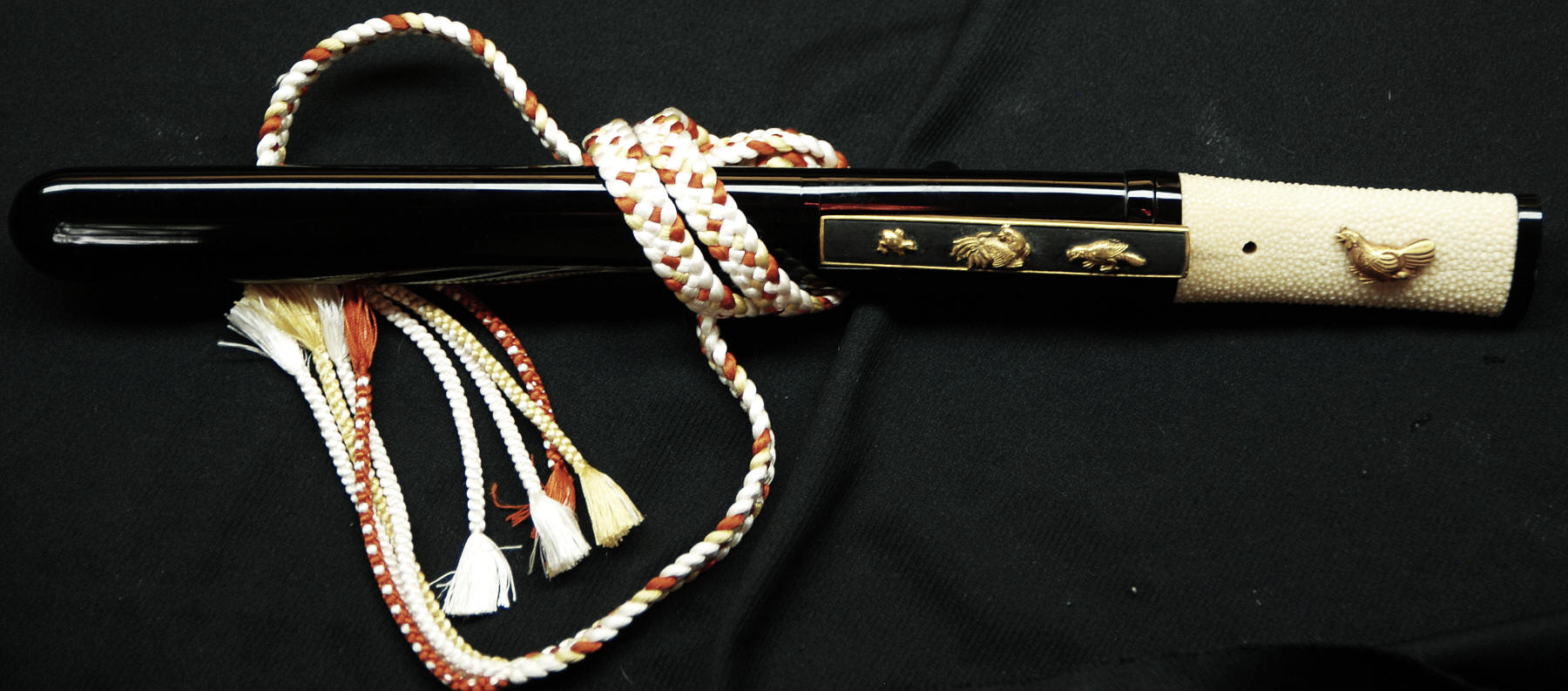

Storage scabbard is finished in high quality, thick black lacquer.




High Quality Same - Clear Color & Large Nodules
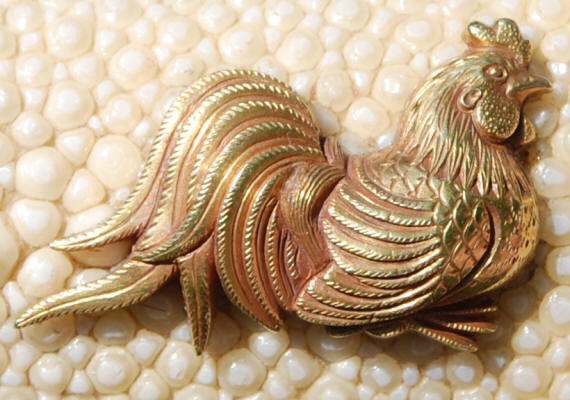
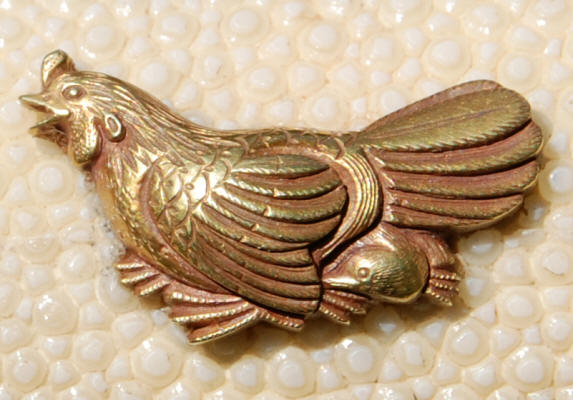
Goto Solid Gold Roster & Hen. Note: kinsabe
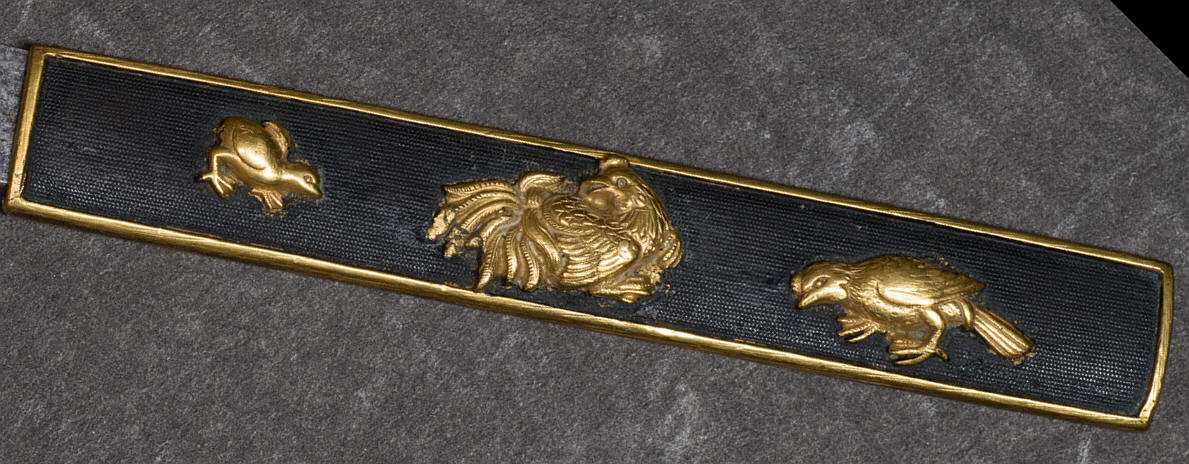
Early Goto Solid Gold Hen Adolescent & Chick on Shakudo Nanako
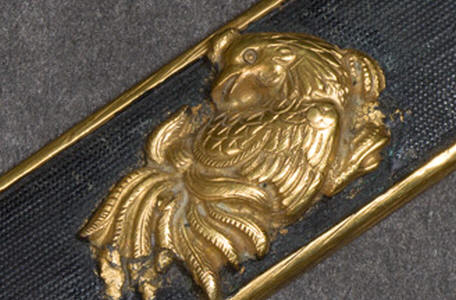
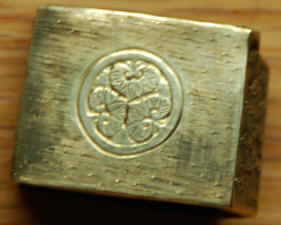
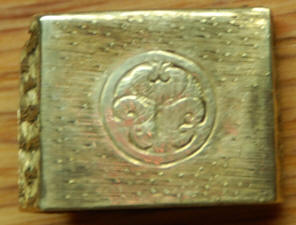
Solid Gold Habaki With Tokugawa Mon



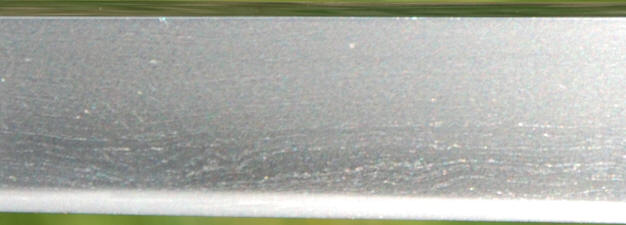

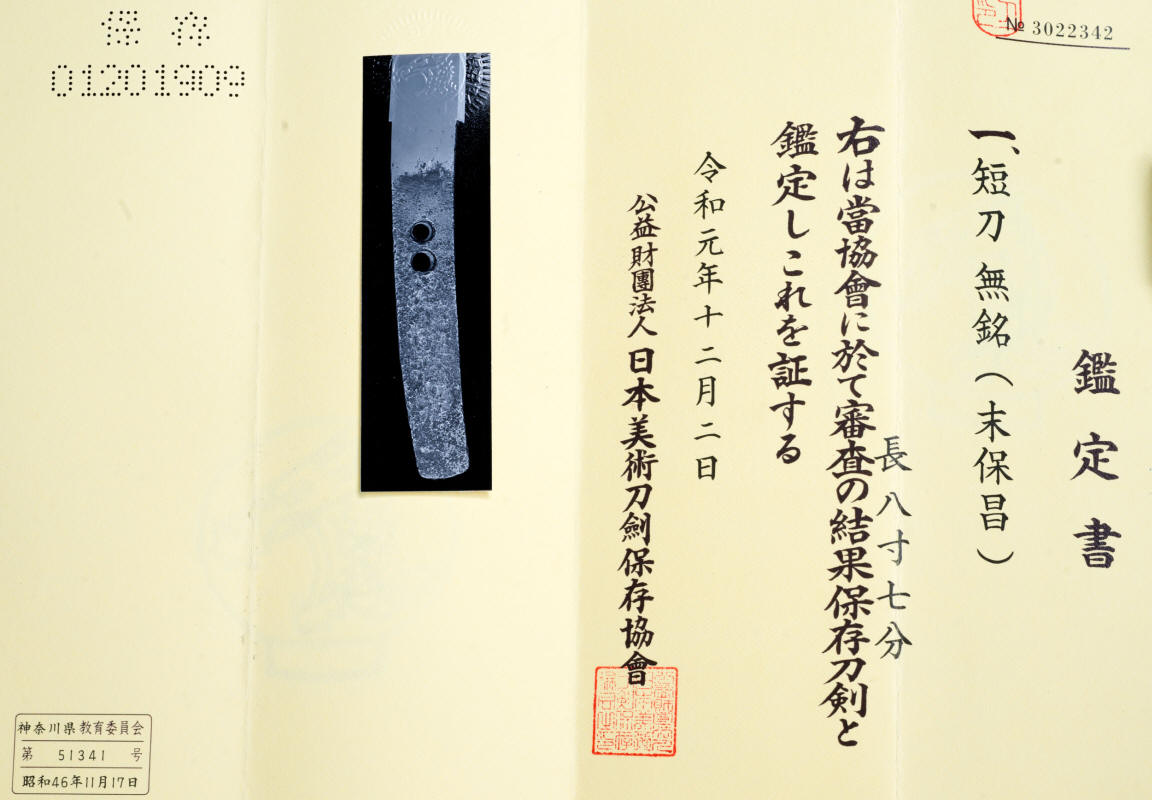


Tokubetsu Hozon - 2019
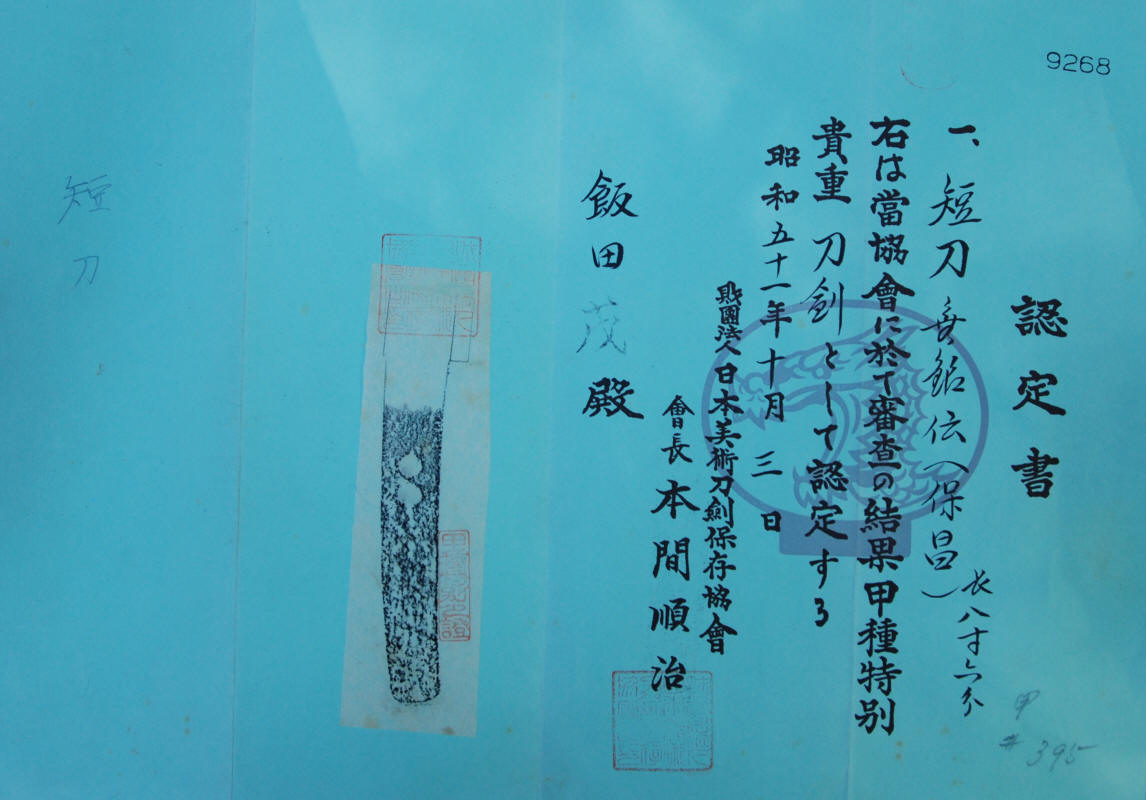
Koshu Tokubetsu Kicho - 1976
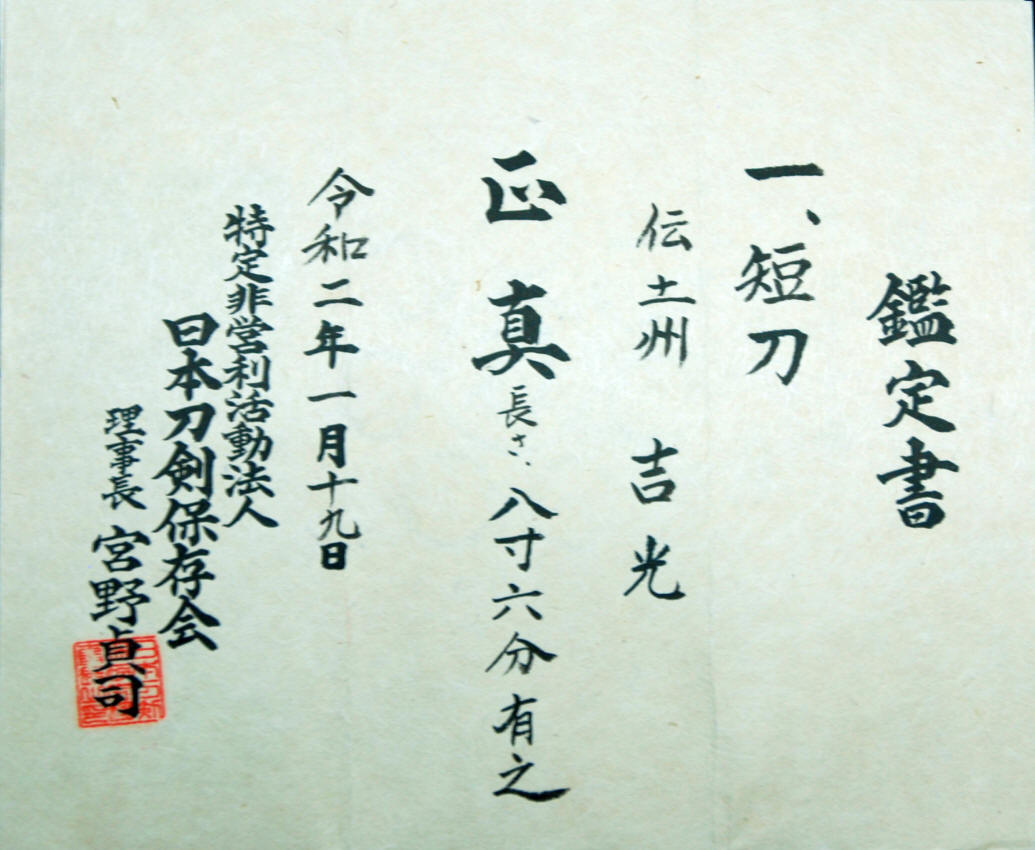
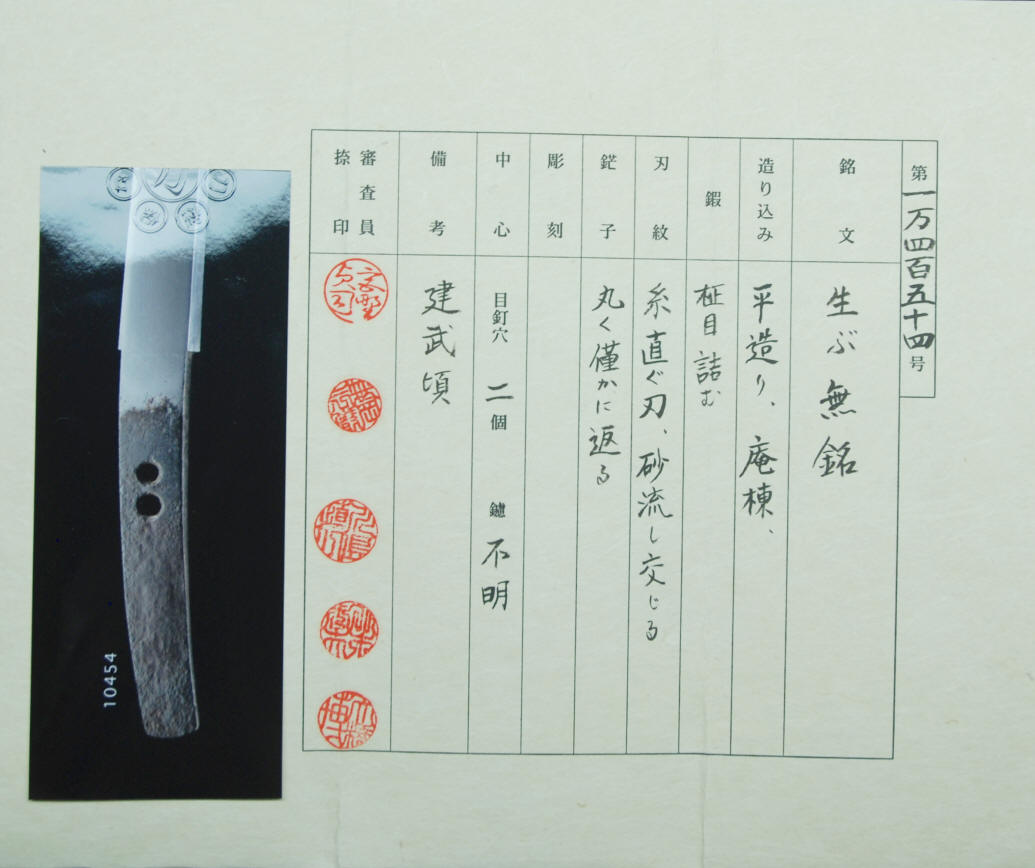
Around Kemmu (1334-1336) / Two mekugi ana (?) / Maru with insignificant kaeri / Hosho Suguba Sunagashi mingling / Masame packed together / Hirazukure Iroi mune / Ubu Mumei /#1,0454
NTHK/NPO - 2020